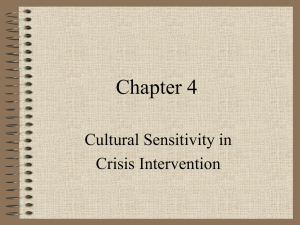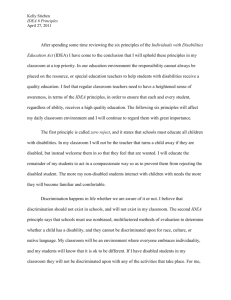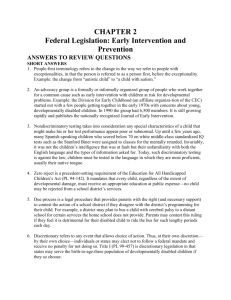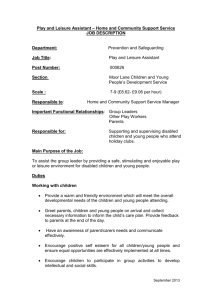Abuse of disabled children
advertisement
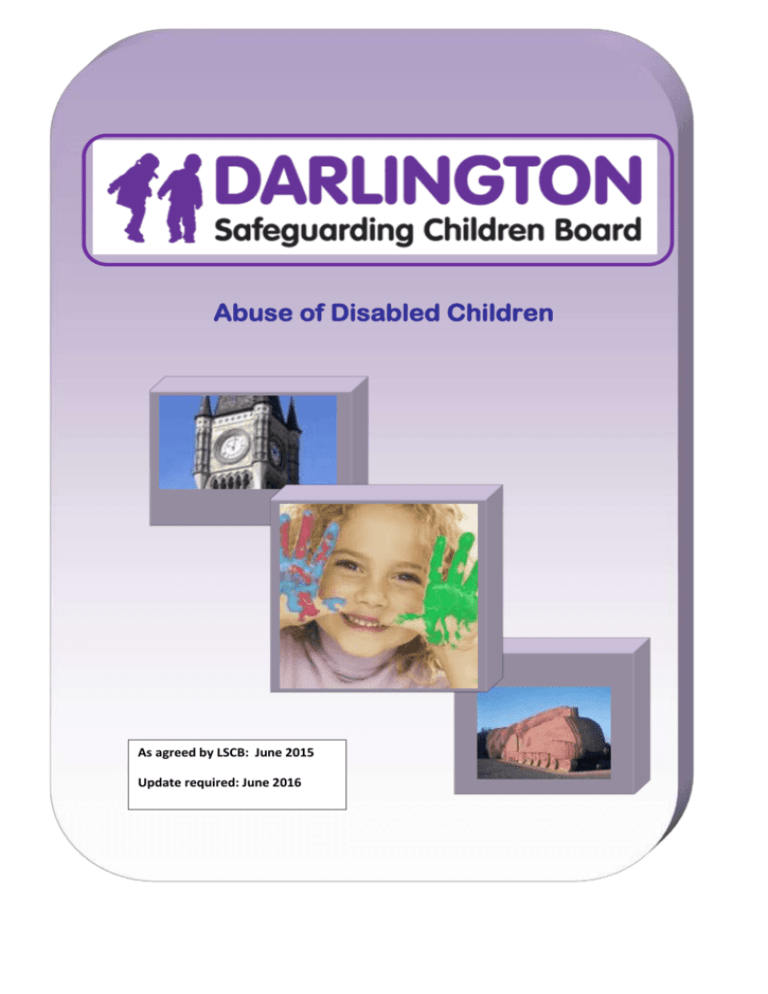
Abuse of Disabled Children As agreed by LSCB: June 2015 Update required: June 2016 Abuse of Disabled Children Key Points It should be remembered that disabled children are children first and foremost, and have the same rights to protection as any other child. People caring for and working with disabled children need to be alert to the signs and symptoms of abuse. Disabled children are particularly vulnerable and at greater risk of all forms of abuse, including abuse whilst being cared for in institutions. The presence of multiple disabilities increases the risk of both abuse and neglect. The increased vulnerability for disabled children arises from a number of factors, which include the following: They tend to have fewer contacts with other people than other children They receive intimate personal care often from a number of carers which may increase The risk of exposure to abusive behaviour and make it more difficult to set and maintain physical boundaries They have an impaired capacity to resist or avoid abuse They may have communication difficulties and have greater dependency on adults which make it difficult for them to tell others what is happening They may be inhibited from complaining through a fear of losing services They may be isolated from their families by virtue of respite care or residential placement which may make disclosure of abuse more problematic They may lack sex education or understanding which can increase vulnerability They are especially vulnerable to bullying and intimidation Lack of recognition There is a lack of recognition by many professionals and carers that disabled children are abused or that, if they have been abused, they are badly affected and may benefit from therapy. Signs or symptoms of abuse may be ‘explained away’ as part of their normal behaviour. For example, bruising could be said to be caused by a child’s tendency to fall or sexualised behaviour may be put down to impairment. It is important therefore to check out all these explanations and not accept them at face value. It will be helpful to check out whether the child’s behaviour is consistent with all carers. Society may see disabled children as having less value and attribute to these children an inability to make their own decisions, a lack of capacity to be affected by abuse or an inability to fully comprehend their circumstances. Consequences Some children will have become disabled because of abuse perpetrated on them. An abusive environment may reduce an individual’s ability to maximise their potential. In addition, abuse may have a much more profound effect on a child whose self-esteem is already low as a result of attitudes towards their disability. Communication Disabled children may have limited verbal skills. This can make a direct disclosure of abuse less likely. Disabled children are often not taught words, signs or symbols for intimate parts of their bodies or for sexual behaviour. Lack of specialist communication skills can hamper enquiries and specialised workers will need to be engaged. Some children may develop their own means of communication, the interpretation of which requires specialist knowledge of the child and therefore, this limits those from whom the child can seek assistance. Assumptions must not be made about the inability of a child with disabilities to give credible evidence or to withstand the rigours of the court process. In planning an interview with a child with disabilities, workers need to take account of how a child communicates. It will often be appropriate to involve other professionals with skills in particular modes of communication. However, it should always be the social worker conducting the interview who takes the lead in the interview process. Over-reliance on the facilitator should be discouraged, as is communicating with the facilitator about the child. All children communicate the onus is on the interviewer to understand and use the child’s own method or system of communication Relationships and sexuality Disabled children are often seen as having no sexual identity and their sexual feelings are often not acknowledged. Sexualised and/or disturbed behaviour is frequently accepted as part of a child’s disability without further thought or questioning. They may not be taught about appropriate relationships, and therefore may be more easily exploited. Limitations of personal choice Disabled children are accustomed to being directed. They are rarely offered choices or provided with enough information to make a choice. This may mean they are less able to recognise and withdraw from abusive situations. Where a child with a disability requires intimate care, which may often be undertaken by a number of different carers, it may be difficult for a child to distinguish between appropriate and non-appropriate touching and their right of choice about who carries out such care. This may also be true for children who have experienced a high level of medical interventions and treatment. Signs and symptoms Disabled children will usually display the same signs and symptoms of abuse as other children. However these may be incorrectly attributed to the child’s disability. All people who work with disabled children will need to be alert to the possibility of abuse and seek advice from appropriately trained professionals, e.g. community paediatricians; social workers, nurses and teachers specialising in disability, if they are concerned that a child may have been abused. Safeguards for Disabled Children All agencies should pay particular attention to promoting a high level of awareness of the risks to disabled children and high standards of practice. For example, it should be common practice to help disabled children to make their wishes and feelings known in respect of their care and treatment and ensure they know how to raise concerns if they are worried or angry about something. There should be an explicit commitment to and understanding of all children’s safety and welfare among providers of services used by disabled children. Referrals concerning disabled children Where there are concerns about significant harm to a disabled child, a referral hould be made. In addition to the details required for all referrals, further information must be provided on: The nature and degree of disability and the effects on the child; The level and degree of the child’s ability to communicate and methods used; The level of the child’s comprehension and concentration span; Any network of support provided to the family (including details of any respite care). The Assessment must focus on the child rather than the impairment. There is a danger that the needs of the parents take priority and a ‘Care package’ is the outcome rather than a Child Protection Plan. Workers must ensure that, whatever the difficulties, the child has an opportunity to be heard. See ‘Communication’ above.


